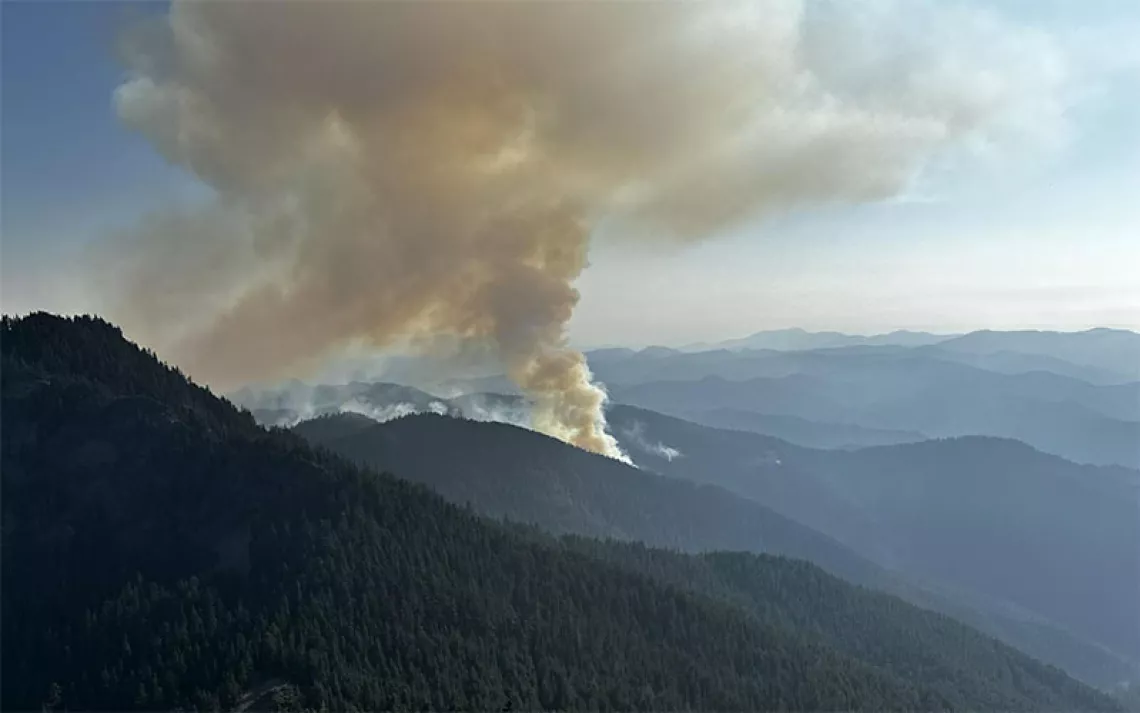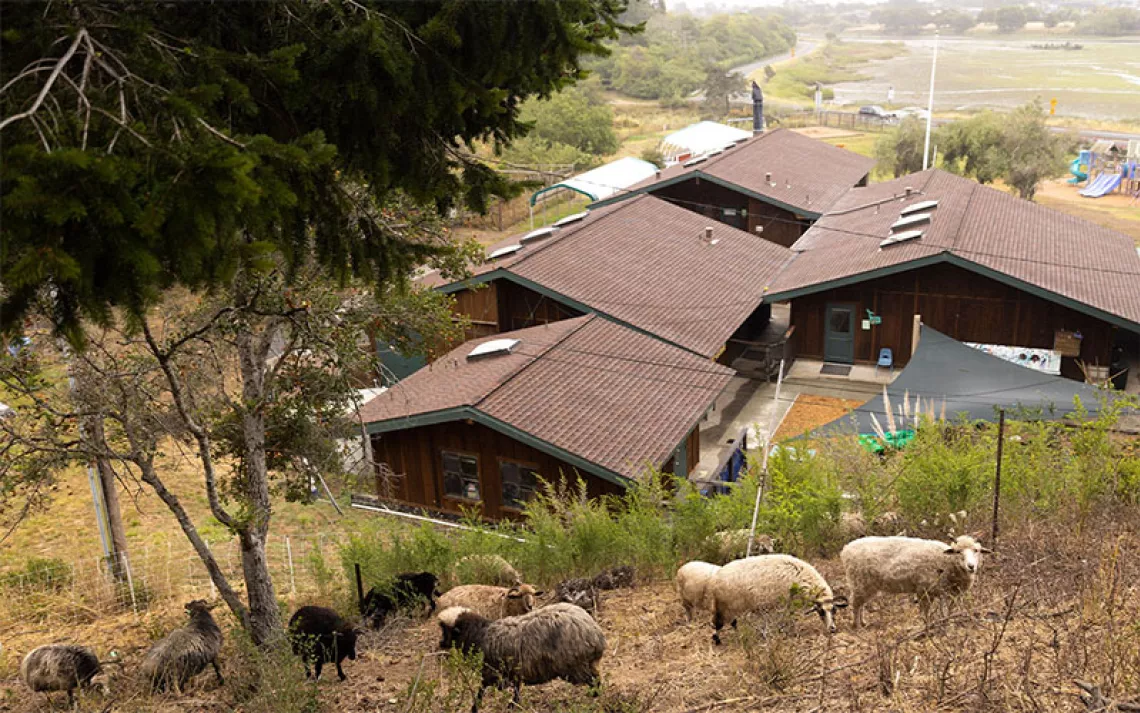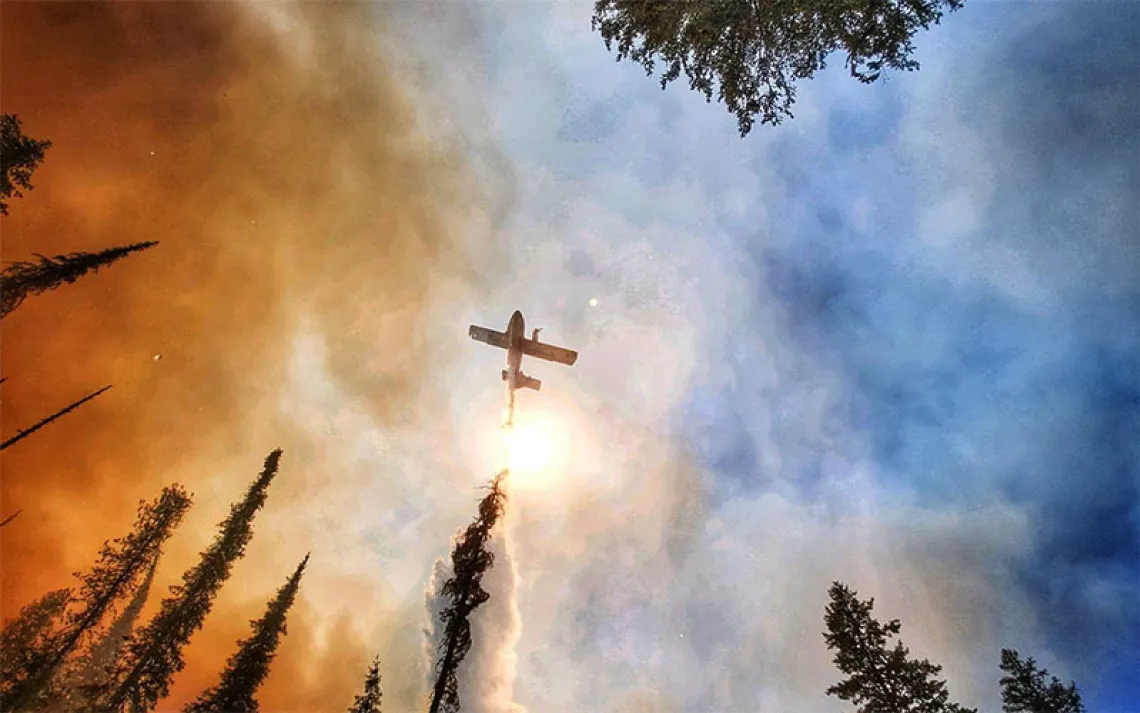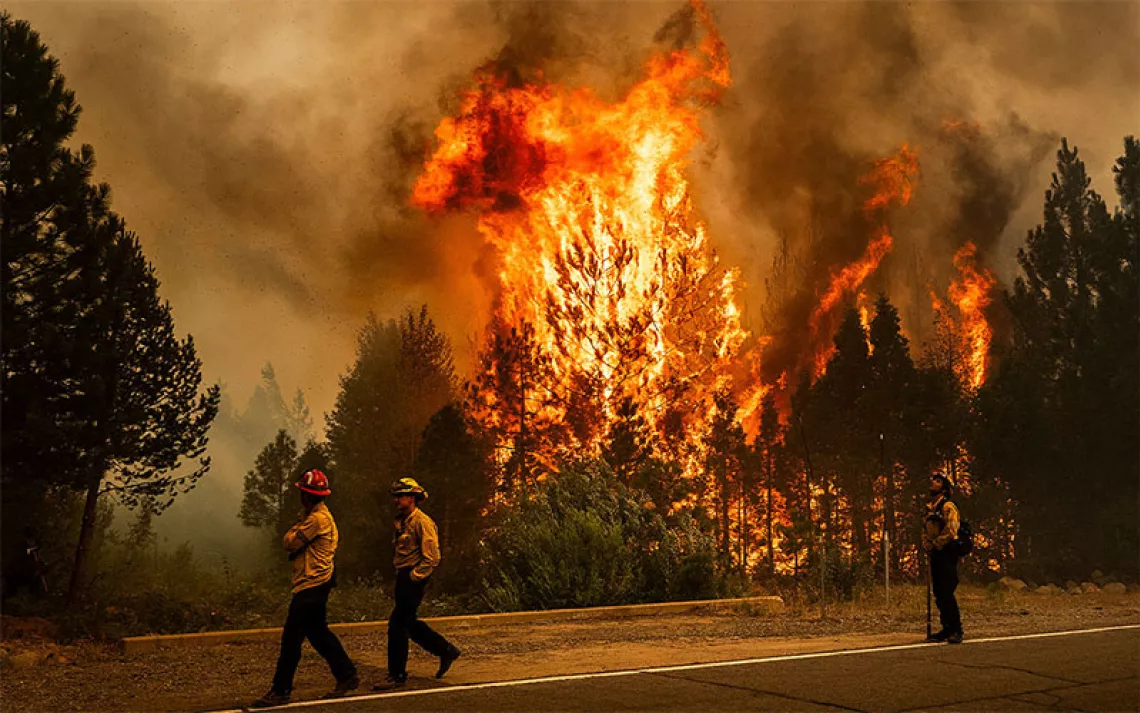California’s Wildfires Point to a New Normal
Edward Struzik, author of "Firestorm," says we need a road map for the future

Sonoma, California | Photo by Kent Porter/The Press Democrat via AP
The year was 1991. Hot, dry winds set the stage for a monster inferno that leveled entire neighborhoods in the hills of Oakland, California. Some residents abandoned their cars and fled on foot as the fast-moving flames jumped over freeways and tore through streets, taking them by surprise. Around 2,500 homes, over 2,000 vehicles, and 40 apartment buildings were lost, with 25 dead. It went down in history as one of the most devastating wildfires ever recorded in California.
That was until this week. The wildfires now burning out of control in Sonoma, Mendocino, Yuba, and Napa Counties have laid whole neighborhoods to waste, destroying around 3,500 buildings, with over 30 confirmed dead and over 400 missing. Entire cities such as Calistoga are under mandatory evacuation orders. Acrid smoke carrying toxic chemicals is traveling for miles, blanketing the Bay Area and surrounding communities. Some 160,000 acres have burned.
The breadth and intensity of the disaster caught many people by surprise. But to fire ecologists, conservationists, and policy experts, there’s nothing surprising about it. This is the New Normal, it’s been here for years, and we’re badly in need of leadership and a national dialogue on what to do about it.
Edward Struzik is an award-winning journalist, a fellow at the Institute for Energy and Environmental Policy at Queen’s University in Kingston, Canada, and the author of Firestorm: How Wildfire Will Shape Our Future. He, too, has been watching with dismay, and frustration, as yet another megafire has devastated California communities.
“What surprises me the most is how surprised people are,” Struzik said in an interview this week. “It surprises me that people think we’ve reached a new kind of threshold, when in fact, there’s been a consistent pattern evolving since the late 1980s and early 1990s. Many wildfire experts saw this coming a long time ago. It’s just that the politicians and the public never really signed on.”
It’s easy to forget in the face of such national tragedies that fire is a natural, even necessary, part of our planet’s ecosystem, and has been for thousands of years. Fire replenishes soil nutrients and clears away debris and dead or dying trees. First Nations communities have long contributed to that balance through varying practices of prescribed burning, multiple examples of which Struzik cites in Firestorm. “In the 1840s and 1850s,” he writes, “Oblate missionaries such as Albert Lacombe described how these First Nations people lit up parkland, forests, and prairie shrublands so that lush grass would grow and attract bison.”
Studies going back decades have shown that climate change has led to warmer, drier conditions that are exacerbating the natural drying trends that typically lead to normal, seasonal fires. These drier, hotter conditions have arrived after years of forest mismanagement policies that emphasized fire suppression over preserving the ecological benefits of fire to a healthy forest ecosystem. With millions of dead trees from bark beetle infestations available as kindling, it is a perfect storm: Fires are burning bigger, hotter, and faster at an exponential rate.
“What we’re seeing is a long-term trend that began with the serious warming of our planet in the 1980s,” Struzik says. “As we get warmer and the forests get drier, and as we get more lightning strikes and more people in these forested landscapes, we’re going to get more of these fires.
The impacts on the environment, public health, and wildlife of these massive wildfires extend beyond the range of their immediate devastation. The smoke they produce can carry toxic chemicals for hundreds, sometimes thousands of miles, with the potential of releasing what Struzik calls a “carbon bomb” into the atmosphere. He points to the 1950 Chinchaga fire in northern Canada, which produced a dense layer of smoke that reached cities from the United States to Europe. In New York, Yankee Stadium had to turn its lights on for a day game, and planes had to be diverted. Some people thought an atomic bomb had exploded. In Denmark, there was a run on banks because people thought that the end of the world had come.
Wildfires that struck Alaska in 2004 raised ozone levels in Houston, Texas, to hazardous levels. This past summer, fires in British Columbia, Oregon, and Washington sent smoke that traveled all the way to Montana, Alberta, and Idaho. The young and the elderly, and people with asthma and other respiratory problems, are particularly vulnerable.
“What happens in Alaska can affect people in Texas,” Struzik says. “What happens in northern Quebec can affect people in New England. From a holistic point of view, wildfire matters no matter where it burns.”
Other impacts are harder to see, but no less destructive. In the case of the 2002 Hayman fire in Colorado, the fire burned so hot along the watershed that it created a waxy layer along the shoreline. When it rained, there were no trees to absorb the moisture. All the carbon and chemicals in that ash washed into the river, went downstream, and clogged up the water treatment facilities that provide water to 75 percent of the state. The utility had to hire a team of scientists to figure out how to correct it, and the trout fishery still hasn’t recovered.
With the planet warming and altering ecosystems, Struzik argues, we need to plan for fire instead of reacting to it. In addition to addressing the causes of climate change head on, such as reducing carbon and methane pollution, we need better forest management practices to make sure forests are healthy, and stronger building codes to make communities more resilient. He points to Firewise and FireSmart programs that offer fire mitigation, education, and preparedness programs.
The U.S. Forest Service is already stressed to the limit. According to its 2017 assessment, “as fire seasons have worsened, our firefighting costs have routinely exceeded our annual budgets for fighting fire, forcing us to ‘borrow’ funds from nonfire programs.” If the intensity of these megafires continues to worsen, the Forest Service could have no more money for wildfire research or recreation programs.
“Most of the research money that we once had to study this is now being diverted to fighting fires,” Struzik says. “It will all go into firefighting. Something’s got to give at this point. Until politicians come to grips with this, we’re just going to see more fire seasons like what we saw this year, or in 2015 when Washington and Oregon burned up. It’s going to happen more and more often. Everybody knows this, but nobody has a plan. We don’t have a road map to the future when dealing with wildfires.”
 The Magazine of The Sierra Club
The Magazine of The Sierra Club



